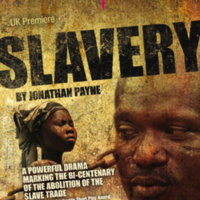
Slavery
A one-act play by Jonathan Payne, 'Slavery' re-tells the personal stories of enslaved Black Americans, using original recordings of interviews conducted by the United States Government's Federal Writers Project in the 1930s. The play brings together a collection of personal testimonials and spirituals (Christian songs created by African slaves in the United States), to explore the consequences of slavery. Presented in 2007 by the cross-cultural London theatre company Tara Arts and directed by Laura Kriefman, the play toured nationally during Black History Month. An Education Resource Pack was produced and drama workshops for schools were held after the performances to explore the issues raised.
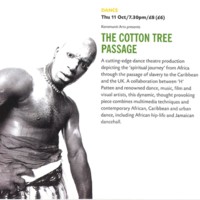
The Cotton Tree Passage
'The Cotton Tree Passage' was a dance theatre production by Koromanti Arts performed at The Drum in Birmingham as part of the Routes to Freedom season. The production depicted the spiritual passage of slavery from Africa to the Caribbean and the UK. A collaboration between 'H' Patten and dance, music, film and visual artists, this piece combined multimedia techniques and contemporary African, Caribbean and urban dance, including African hip-life and Jamaican dancehall.
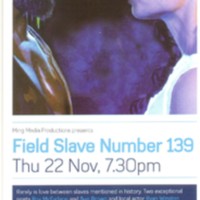
Field Slave Number 139
'Field Slave Number 139' was written and produced by Ava Ming, and commissioned by The Drum in Birmingham as part of their Routes to Freedom programme. The play focuses on a love story between a dark-skinned field slave and mulatto house slave on a plantation in America's Deep South. 'Field Slave Number 139' is written mostly in monologues with occasional interaction between the actors: all three were on stage for the duration of the piece. The 2007 production featured two performance poets and a local actor.
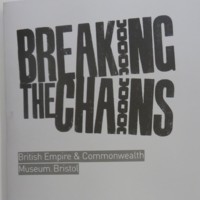
Breaking the Chains
Breaking the Chains opened at the British Empire and Commonwealth Museum to coincide with the bicentenary, and told the story of the British transatlantic slave trade and its abolition. Developed in partnership with Bristol City Council's Museums, Galleries and Archives' Service, the exhibition used artefacts, film and testimony to challenge perceptions about Britain's involvement in the slave trade and its legacy today. It featured a multimedia gallery of digital memories and feelings on the contemporary legacies of the slave trade; interactive sound stations to see and hear personal testimonies and the power of black music; and the ‘Me deya’ gallery, led by Firstborn Creatives, a collection of work from artists and communities who wished to share their creative pieces about the legacies of the slave trade. Associated events included African music for children, community dance events and public debates.
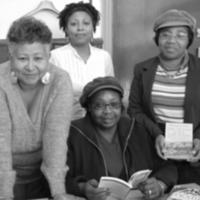
Interwoven Freedom
SCAWDI are a Birmingham-based community group specialising in working with local volunteers to research the early presence of Black people in the West Midlands. In collaboration with English Heritage, ‘Interwoven Freedom’ enabled a group of local women to visit archives, exhibitions and historic sites and explore the role of women in the abolitionist movement. The participants drew on traditions of abolitionist women such as Elizabeth Cadbury creating and distributing workbags filled with anti-slavery manifestos by making their own textile bags from fair trade cotton and African cloth. They wrote their own manifestos which mixed historical facts with fictional stories and poems. The accompanying exhibition of textiles, text panels and an audio documentary toured London and 11 regional venues. The exhibition included photographs documenting the project by photographer Vanley Burke.
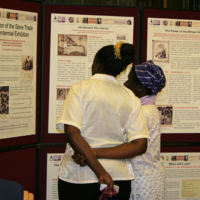
Abolition of the Slave Trade Bicentennial Exhibition
This exhibition held by the Cadbury Research Library: Special Collections at the University of Birmingham included material from the archives of the Church Missionary Society held there, and some of its rare book collections. The accompanying information boards are featured here. The exhibition focused on the role of religion in the abolitionist movement, the power of the African voice in literature, and the role played by Birmingham residents in the anti-slavery campaigns. A booklist on anti-slavery publications held at the library was also produced. The exhibition was part of a University-wide initiative, with additional involvement from academic departments and the Guild of Students. An online exhibition was also produced in collaboration with the Library of the Religious Society of Friends: 'Quakers and the path to abolition in Britain and the colonies'.
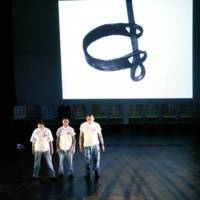
Remembering Slavery Freedom Performance
Remembering Slavery 2007 involved museums, galleries and other cultural organisations across the North East of England in a programme of exhibitions, events, performances, lectures and activities to explore the themes of slavery and abolition, and identify connections with the region.
The Freedom Performance was a collaboration between Tyne and Wear Museums, Dance City (a dance school in Newcastle), professional artists, performers and community and youth groups from across Northumberland and Tyne and Wear. The performance was inspired by music, dance, literature and objects relating to the slave trade and its legacy.
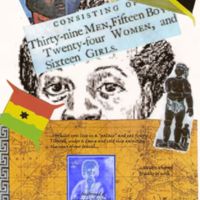
Hidden Stories
A collaborative project between Barnsley Archives and Local Studies, the Cooper Gallery and Cannon Hall exploring local connections to the slave trade. Cannon Hall is the ancestral home of the Spencer Family, who made their fortune in the local iron industry. In the mid-18th century, Benjamin Spencer became involved in the slave trade, and owned a slave ship called ‘Cannon Hall’; in contrast, Walter Spencer-Stanhope, who inherited the hall in 1775, supported the abolitionist movement. Pupils from local primary schools explored the hall’s connections to the slave trade and abolitionism, and produced artwork in response to the hidden histories, some of which were exhibited in the Cooper Gallery’s exhibition, ‘Witness’.
The ‘Hidden Stories’ project also explored the Crossley Family archive held by Barnsley Archives and Local Studies (Benjamin Crossley owned a sugar plantation in Jamaica). Barnsley Archives worked with the Barnsley Black and Ethnic Minority Initiative on a project to encourage black and minority ethnic groups in the Barnsley area to discover more about their roots. Other partners included Barnsley Out of School Study Support Network, Foulstone City Learning Centre and Just Addictive Music.
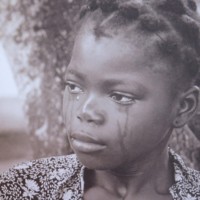
Remembering Slavery Exhibition
Remembering Slavery 2007 involved museums, galleries and other cultural organisations across the North East of England in a programme of exhibitions, events, performances, lectures and activities to explore the themes of slavery and abolition, and identify connections with the region.
The Remembering Slavery exhibition focused on objects, paintings, documents and other historical material relating to the transatlantic slave trade and its legacy. The exhibition and associated programme of activities opened at the Discovery Museum in Newcastle and then toured to South Shields Museum and Art Gallery; Sunderland Museum and Winter Gardens; and the Laing Art Gallery. Whilst at the Discovery Museum, the historical exhibition was accompanied by a photographic exhibition, ‘Human Traffic’, produced by Anti-Slavery International, documenting the trafficking of children in Benin and Gabon in West Africa. Whilst at the Laing Art Gallery, the exhibition was shown alongside ‘La Bouche du Roi’ by Romauld Hazoumé, a contemporary installation based on the ‘Brookes’ slave ship.
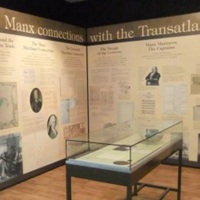
'A Necessary Evil'
An exhibition which explored the connections between the Isle of Man and the transatlantic slave trade between 1718 and 1807, as shown in assorted archives. Mounted in the Lower Folklife Gallery at the Manx Museum, the display revealed evidence of Manx captains, officers and crew recorded on slaving ships in the Port of Liverpool muster rolls or in probate records. Documentation shows Manx merchants dealing in ‘Guinea goods’ and investing in trading voyages; also Manx people part-owning or managing plantations in the Americas. The title quote was taken from the memoirs of Manxman Captain Hugh Crow, published posthumously in 1830. Crow wrote, ‘I have viewed the abstraction of slaves from Africa to our colonies as a necessary evil, under existing circumstances’. In July 1807 the last legal slave voyage for an English vessel began from Liverpool. Crow, aboard 'Kitty’s Amelia', took command en route to Bonny.
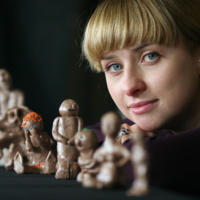
Revealing Histories: Remembering Slavery (Museum of Science and Industry)
The Museum of Science and Industry (MOSI) was one of eight heritage bodies in the ‘Revealing Histories: Remembering Slavery’ partnership in Greater Manchester. The project set out to explore the history, impact and legacy of slavery on Britain through collections and community links in the North West.
An exhibition and trail at MOSI explored the connections between Manchester’s economic success from the late eighteenth century onwards and its international trade, particularly the cotton trade with the USA, with its associated links to the transatlantic slave trade. Items identified in the collection included an American Civil War patriotic envelope from 1861, which satirised Britain's willingness to ignore the plight of American slaves. Other events included the creation of a series of terracotta figures depicting slaves on a slave ship by artist Annette Cobley. Workshop sessions to accompany this artwork were based on the theme of silence surrounding slavery.